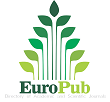Vol. 1 No. 3 (2023)
Published:
2023-12-31
Article
-
 Open Access
Open AccessArticle ID: 82
Review
-
 Open Access
Open AccessArticle ID: 105
 Open Access
Open Access
Article ID: 50
Tannase is a hydrolytic enzyme, known as tannin acyl hydrolase, that acts on the ester bonds of hydrolyzable tannins to produce gallic acid. Tannase enzymes are obtained from various sources. Tannase from microbial sources, especially fungi, such as Aspergillus spp., has been used in the food, brewing, and pharmaceutical industries. Tannin acyl hydrolase activities of Actinomycetes are seldom reported, though they are known to produce a wide range of industrial enzymes. This communication deals with the tannase activity of a Streptomyces isolate from the shola forests of Munnar in the Western Ghats of Kerala, India. The isolate is identified as S. mirabilis TBGS10 based on morphological characters and the 16s rDNA homology. The isolate showed promising tannase activity in plate assays and under submerged and solid-state fermentation conditions. High-pressure liquid chromatography was used to determine the industrially important intermediate gallic acid produced through solid-state fermentation using cashew apple bagasse as the substrate. The extract was observed to have a gallic acid content of 142.624 g/mL with a retention time of 2.506 min. The tannase gene of the strain TBGS10 was PCR-amplified using specific primers designed based on similar Streptomyces sequences available in the NCBI-GenBank.
 Open Access
Open Access
Article ID: 72
Consumer demands for food packaging and quality are increasing, and the preservation of food quality during storage is critical, especially for spices. In this study, four different packaging methods, which were packaging using a transparent sealing bag (TSB), a transparent plastic bag (TPB), a lightproof sealing bag (LSB), and a woven bag (WB), were applied to the storage of star anise at room temperature for one year. Changes in moisture content, volatile oil (VO), trans-anethole in VO (TA-O), shikimic acid (SA), main flavor substances, and mycotoxins were monitored during storage. The results show that the two sealed packaging methods (TSB and LSB) were better at preventing moisture absorption than unsealed packaging (WB and TPB). In addition, the color of star anise packaged using the TSB method was the best, although the LSB method effectively reduced the loss of SA, VO, and TA-O. The gas chromatography–mass spectrometry (GC-MS) and principal component analysis (PCA) results show that the flavor substance scores of the LSB sample were the highest, followed by those of the TSB, TPB, and WB samples. Finally, the quality characteristics of star anise packaged using various methods for preservation were assessed using hierarchical clustering analysis (HCA). The LSB method was found as the best storing method for dried star anise at room temperature.
 Open Access
Open Access
Article ID: 82
Non-protein amino acid of γ-aminobutyric acid (GABA) plays an important role in the human nervous system. GABA has revealed numerous physiological benefits in the medical and pharmaceutical fields in humans. It is regarded as an edible alternative treatment for the prevention and treatment of many diseases. As a result, GABA-rich functional foods are highly favored by consumers. Therefore, in order to meet the demand for healthy food, the use of effective and safe enrichment methods to increase the content of GABA in food has received much attention. The content of GABA in natural foods, bioenrichment techniques, and the health benefits of GABA-rich foods were discussed. In addition, the shortcomings and future challenges of GABA bioconcentration technology were discussed, in order to provide a new idea for the investigation of GABA enrichment technology.
 Open Access
Open Access
Article ID: 115
The B. flabellifer L. has untapped potential in sustainable development and its products have many high food and medicinal values. Palmyraculture is defined as the plantation and utilization of Palmyra palm for self-reliance and sustainable development. The endosperm/embryo of germinated seeds is an important biomaterial, also known as haustorium. This paper provides comprehensive insights into the molecules of the haustorium, especially those of pharmaceutical and nutritional interests, and briefly explores other applications of haustoria. The discussions of seed germination, and consequently, the haustorium development have made their way in 21st-century research. With further advancements in chemical analytic techniques and the growing realization of diverse uses of nearly every part of the plant, more attention has been attracted to the phytochemical composition of the parts, including the haustorium. The recent research on the haustorium examines haustoria molecules, their respective functions and uses, and their interactions with external factors. During the period when the haustorium converts complex nutrients in the endosperm into simple forms for the growing embryo, it is composed of varying essential sugars, amino acids, phytochemicals, bioactive compounds, macro, and micronutrients, all of which are highly beneficial for human health. It also possesses glycosides, flavonoids, phenols, and saponins, which contribute to its medicinal properties of acting against hypertension, hypercholesterolemia, hyperglycemia, obesity, as anti-allergic, anticancer, and anti-neoplastic agents, and for fighting against oxidative stress. The most recent study on the haustorium highlights how its extracts serve as an efficient antioxidant and anti-inflammatory functional food. Future studies of the Palmyra palm haustorium could offer potential applications; emphasizing the pharmaceutical, nutritional, and ethnobotanical significance.
 Open Access
Open Access
Article ID: 105
The world faces a complex nexus of interconnected issues, ranging from climate change and resource depletion to economic disparities and geopolitical tensions. These challenges pose formidable obstacles to ensuring access to safe, nutritious, and sufficient food for all. Examining the multifaceted landscape of global food security, this overview explores the intricate relationships between environmental sustainability, agricultural practices, and the socio-economic well-being of communities. About 924 million individuals (11.7% of the world’s population) face acute food insecurity—a rise of 207 million since the pandemic. There are several causes, including broken food supply networks, high unemployment rates, income loss, and growing food prices. By navigating the nexus of issues surrounding food security and aligning efforts with the 2030 Agenda, the international community can pave the way for a more resilient, sustainable, and equitable global food system.
2972-4309 (O)
Quarterly



.jpg)
.jpg)